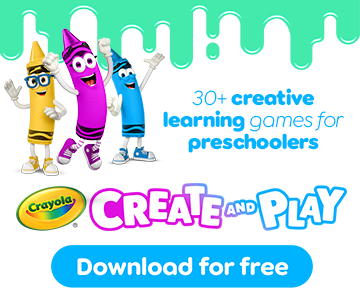When you think of reading with your baby, you think language development, vocabulary, and lots and lots of cuddles. But did you know that these shared reading moments are also wonderful opportunities to practice and refine your baby’s essential fine motor skills?
“There are so many ways books support the development of fine motor skills,” says Karen Gawen, Young People’s Services Supervisor from Sunshine Coast Council. “Because reading and writing are such inseparable skills, exploring books is the perfect way young children can prepare for writing in the future.”
When your child interacts with a book, it gets those little fingers, hands and wrists working.
“Turning pages, pointing to illustrations, tracing letters — these are all rich opportunities for development, all found from the simple act of sharing a book,” Ms Gawen says.
Shared reading also develops hand-eye coordination and stimulates the senses of sight, touch, sound and taste, Ms Gawen explains (because we know all books must go straight in the mouth).
“It’s absolutely fine for babies to chew books — they are simply investigating what this big square thing is! Opt for tough board books and canvas books designed to withstand a baby’s enthusiasm,” she says.
What you can do while reading together
Turn pages: At around 12 months old, your baby may begin to grab for the book and want to turn the pages. At first, they will probably grab several pages at a time, but the more they handle books the easier it becomes. Let them turn the pages, explore the book. By around three years of age, your toddler will likely have mastered the skill of turning just one page at a time.
Try interactive books: Many books have interactive elements, such as flaps to lift, buttons to press or turn, and textures to touch. These books are great for getting baby’s fingers moving in different ways. They are also wonderful for keeping a baby engaged and focused on the book, which develops their attention span.
Encourage hand-eye coordination: When babies read, it’s not just their hands and eyes involved, they also use their arms too. The eyes, hands and arms must all work together if your baby is to be able to make more refined movements.
Sensory development: The ‘touch-and-feel’ books or those with unique textures also support sensory development. Bub will become more accustomed to feeling new textures. This helps them feel more comfortable with other textures such as clay, sand, and play dough.
Point: Pointing to pictures as you read encourages your baby to do the same. This is the start of communication between the two of you — babies point to ask for an explanation. By following words in a book with your finger as you read, you’re teaching your baby that printed symbols and words have meaning. Also, pointing means your baby is flexing those finger muscles that will help them hold a pencil in the future.
Inspire creativity: There are books available that inspire creative activities, such as tracing. These are great as your baby reaches toddler stage for developing their fine motor skills. You might encourage your child to draw a scene from a book you’ve read together. You can also get stickers and get your child to place them onto a scene.
Skills books can promote
- Visual scanning, to find a certain picture or colour.
- Fine motor skills, by pointing and turning pages.
- Gross motor skills, by imitating actions from the book.
- Self-regulation skills, by sitting still and paying attention.
- Social-emotional skills, because so many books teach lessons about feelings, social situations, and what to do with them.
- Cognitive skills, by asking questions about the book to develop problem solving and critical thinking skills, and curiosity.
For more early literacy tips, head to your local Sunshine Coast library.
You might also like…
Join Sunshine Coast Libraries to receive the new kids-only library card!
Sunshine Coast Libraries celebrates the First Nations





